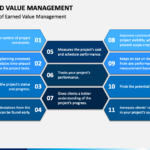You are probably thinking of venturing into the business world in 2023. But setting up a business requires a lot of planning, strategies, legal requirements, budgeting, and much more effort.
Even if you have a brilliant business idea, the success of your venture depends on how well you can execute it. You need to follow the proper steps and understand the different aspects of setting up a successful business.
This guide will help you learn how to start a business in 2023 and make it a success. We will discuss all the steps you need to take and what you should consider for starting a successful business in 2023.
How to Start a Business in 2023 – Steps and Considerations
Having an idea and starting to work on it does not constitute a business. You must go through a series of steps to ensure that your venture is appropriately set up and running smoothly.
Because of the legal and commercial considerations, you must understand the different aspects of the business before establishing it. Following are the steps you should take to start a business in 2023.
1. Put Together a Plan for Your Business
Have a plan in place before you begin your business. Initially, you need to select the name of your business.
It is important to ensure that the name you choose reflects the purpose of your business. Below are some aspects that you should consider when deciding upon a name.
How to Come up With a Name for Your Business: There are a few things that you will want to keep in mind when choosing a name for your business.
The name should be easy to remember, and resonate with your mission, vision, and values. You need to select a proper domain name and ensure that the name is not already in use.
Once you have a list of possible names for your business, you can brainstorm with your friends and family to decide upon the best one.
After you have come up with a great name for your business, you can start working on the other most important aspects of your business plan, such as:
An Overview of Your Business: This should include information such as the purpose of your business, the services or products you will offer, and who your target customers are.
Your Business Goals: In this section, you should outline the goals that you would like to achieve with your business. Also, set realistic targets and timelines for achieving them.
The Steps You Will Take to Achieve Those Goals: You can also include a list of the strategies that you intend to employ to achieve your business objectives.
A Financial Plan: Your financial plan should include an estimate of how much money you will need to start and grow your business and a forecast of your income and expenses.
A Marketing Plan: You must develop a marketing plan explaining how you will reach your target market and how you will promote your products or services.
A Risk Assessment: In this report, you should identify any potential risks to your business and how you plan to mitigate these risks. Considering any legal or regulatory issues that may affect your business is also a good idea.
An Organization Chart: This should show the structure of your company and who will be responsible for each department. You should also outline the roles and responsibilities of each individual in your business.
Procedures Manuals: These should outline the day-to-day operations of your business, including how employees should interact with customers and handle customer complaints.
2. Form the Legal Business Entity
You will need to decide on the legal structure of your business. There are several options to choose from, including:
Sole Proprietorship: This is a legal business entity in which the owner is the only person responsible for the business’s debts and obligations. The owner is also responsible for any profits or losses the business generates.
To form a sole proprietorship, you will need to file a business certificate with your state. This document will outline the basics of your business, such as name, address, and ownership information.
Corporate Organization: A corporate organization is separate and distinct from its owners. It has its own rights and responsibilities and is subject to its own laws.
There are typically shareholders in a corporate organization who own the company and share in its profits. It is necessary to file articles of incorporation with the secretary of state of your state to form a corporation.
The articles of incorporation will include information such as the name and address of the company, the purpose of the company, and the number of shares authorized.
Limited Liability Company: In the case of a Limited Liability Company (LLC) formation, the company’s owners are not personally liable for any debts or obligations related to the business.
This means that the company has separate legal status from its owners and is treated as a separate entity in the eyes of the law. It provides protection to the owners of the company from personal liability associated with the company’s debts and obligations.
Partnership: In a partnership business entity, two or more individuals agree to own and operate the business together.
To form a partnership, the individuals must file a partnership agreement with the state where they plan to do business. This document should contain the partner’s names, the business’s purpose, and the distribution of profits.
3. Source Financing Options for Your Business
Before you can get your business off the ground, you’ll need to find financing. There are a variety of ways to finance your business.
You can use personal savings, borrow money from friends or family, or take a loan from a bank or other financial institution.
Each type of financing has its own benefits and drawbacks, so you’ll need to research your options and choose the one that’s best for your business.
If you’re looking for a loan, a few things are important to remember. You should look around for the lowest interest rate and be prepared to provide detailed information about your business and its finances.
You may also want to consider using a business credit card to finance your startup costs. Credit cards offer a variety of benefits, such as low or zero interest rates on purchases for a set period of time and reward points that can be used for cash back or travel miles.
Whatever route you decide to take, you must ensure you fully understand any financing agreement’s terms and conditions before signing on the dotted line.
4. Open a Business Bank Account
Once you’ve secured financing for your business, it’s time to open a bank account. This will give you a place to deposit funds and make payments from the business.
Opening a business bank account is a fairly straightforward process. Below are the basic steps you’ll need to take:
Choose a Bank: Do some research and compare interest rates, fees, and other features offered by different banks. Try to find one that has the features you need and is convenient for your business’s needs.
Gather the Required Documentation: This will vary depending on the bank, but you will typically need your business license or articles of incorporation, your EIN, and proof of business address. Contact the bank directly to find out exactly what you need.
Complete an Application: You can usually do this online or in person at a branch. Carefully review all the information you provide and ensure it is accurate.
Wait for Approval: The bank will review your application and may ask for additional information before making a decision.
Deposit Funds and Start Using Your Account: Once your account is approved, you can transfer money into it and start doing business transactions.
5. Set up Your Accounting and Taxes System
Now that you’ve secured financing and opened a business bank account, it’s time to set up an accounting and tax system.
This will ensure your company complies with all applicable laws, help you track income and expenses, and give you valuable insights into the overall health of your business.
There are a few things to keep in mind when setting up your accounting and tax system for your business. You need to determine what type of business entity you are.
As you know, there are four types of business entities: sole proprietorship, partnership, corporation, and limited liability company (LLC).
Sole proprietorships and partnerships are the simplest to set up and do not require much paperwork. Corporations and LLCs have more paperwork and are more complex to set up, but offer more protection from personal liability.
Once you have determined the nature of your business, you need to create a system for tracking income and expenses. This will involve setting up a chart of accounts, the list of categories you use to track transactions.
You should also familiarize yourself with the tax laws and regulations that apply to your business. This includes ensuring you are registered for any local or state taxes, understanding when and how often to file returns, and researching any incentives or credits you may be eligible for.
It is necessary for you to select an accounting software system. This will streamline the process of tracking and managing your finances and help make filing taxes easier.
There are many different types of software that you can use for your accounting and taxes, and the one you choose will depend on your business size and needs.
6. Obtain the Necessary Business Permits and Licenses
Permitting and licensing your business typically requires submitting an application to the government agency responsible for regulating businesses in your industry.
The application process will vary depending on the type of business, the jurisdiction, and other factors, so it is best to contact the agency directly for specific instructions.
In most cases, you will be required to provide certain documents when submitting your application. This may include a copy of your business plan, proof of ownership or lease agreement for your premises.
It is also necessary to provide documentation of any licenses or permits obtained from other jurisdictions. You may also be required to pay a fee for your business license.
Once your application is approved, you will receive a license or permit that will allow you to operate your business according to government regulations. You should keep this document in a safe place and present it whenever the government asks you to do so.
7. Purchase Equipment, Software, Supplies & Tools Needed
You must have the right tools and supplies to run your business successfully. The equipment and supplies you need may vary depending on your business type.
Regarding equipment, you need to consider the types of machines, computers, printers, scanners, and tools required for your day-to-day operations.
For software, make sure to select the best applications for your needs. Look into different software platforms such as customer relationship management (CRM) systems, project management tools, accounting programs, and e-Commerce solutions.
You will also need various supplies, such as paper goods, cleaning products, furniture, and other office items.
Take the time to research what types of products are right for your business. Consider cost, quality, availability, and reliability factors when making your selections. You may also want to shop around to find the best deal.
Remember that some products will require maintenance and upgrades over time, so make sure you budget for this. You should also consider investing in quality tools, supplies, and equipment as they will last longer and be more reliable.
8. Create a Brand Identity for Your Company
Your brand identity is an important part of your business. It will help you stand out from the competition and establish a customer connection. Follow these steps to develop your company’s brand identity:
- Develop a style guide for your company’s branding. This should include information on colors, fonts, and other graphical elements that you’ll use in your marketing materials.
- Create a logo and tagline for your company. Make sure these are both consistent with your brand identity and easy to remember.
- Produce a variety of marketing materials that reflect your brand identity, including website graphics, brochures, and business cards.
- It is essential that your marketing materials reflect the same design and messaging across all platforms so that your brand identity is clear to potential customers.
9. Build a Beautiful Website for Your Business
A website is essential for any business in 2023. It gives potential customers an easy way to find out more about your company and acts as a shop front for online sales and services. When setting up your website, consider the following:
- Choose a domain name that reflects your business and is easy to remember.
- Select a platform for web design. Consider factors such as cost, user-friendliness, and flexibility.
- Decide on your website’s layout. This includes the overall design of your website and the positioning of each page’s content.
- Create your website’s content. This includes adding text, images, and other multimedia elements to your pages.
- Publish your website. Once you’ve finished creating your website’s content, you can publish it online for the world to see.
- Research the keywords that people are most likely to use when searching for your type of business. Ensure to include these keywords throughout your website, including in the title, Meta tags, and content.
- Optimize your website’s images and videos for SEO. This means giving them relevant file names and descriptions and adding keywords to the tags.
- Link your website to other high-quality websites in your industry. This will help improve your website’s authority and could lead to better rankings in search results pages.
- Use social media to promote your website. Share links to your website on social media channels like Facebook, Twitter, and LinkedIn, and encourage your followers to visit it. You can hire professionals to help you with all of these steps if you don’t have the time or expertise to handle them yourself.
10. Create a Company Email Address & Phone Number
After setting up your website, you’ll need to create a company email address and phone number. This will give customers an easy way to contact you regarding their queries or orders.
For the email address, make sure you use something professional-sounding. And for the phone number, it’s a good idea to use a business-specific line rather than your personal number.
Once you have these in places, ensure they are clearly displayed on all of your marketing materials. This will enable customers to get in touch with you quickly and easily.
11. Make a Go-To-Market Launch Strategy
Now that you have your business ready to go, it’s time to start thinking about how you’ll launch it. A go-to-market strategy involves the steps you’ll take to promote your business and make it visible to potential customers. To create a successful go-to-market launch strategy, follow these steps:
List of the Best Resources for Your Business: Before you launch, take some time to compile a list of resources that could help your business succeed. This could include online business networks, local events, social media groups, and webinars.
Business Blogs and Magazines to Read: Research which blogs, magazines, and other publications your target customers read. This will help you gain visibility amongst your desired audience. Try to get featured in as many of these publications as possible.
Small Business Websites: Look for websites focusing on small businesses and entrepreneurs. These sites often feature interviews with successful business owners, advice columns, and helpful resources.
Tax Information: You must be familiar with your area’s tax laws and regulations. It will be easier to file taxes in the future if you do this ahead of time.
Advertising Platforms: Get familiar with online advertising platforms and consider the different types of ad formats each one offers. This will help you reach potential customers more effectively.
Final Thoughts on Starting a Business in 2023
We hope that you understand all the steps on how to start a business in 2023. Setting up the right processes and procedures will help ensure your company’s success.
To recap, you should create a business plan, register your company, and build a website with optimized content and images.
As part of the preparation process, you should create your company’s email address and telephone number, develop a go-to-market strategy, and identify the best resources for your company.
Remember, it’s important to stay organized and keep track of everything, from research and advertising to taxes and customer service.
You can make your business a success in 2023 with the right tools and resources. Good luck on your new venture.





